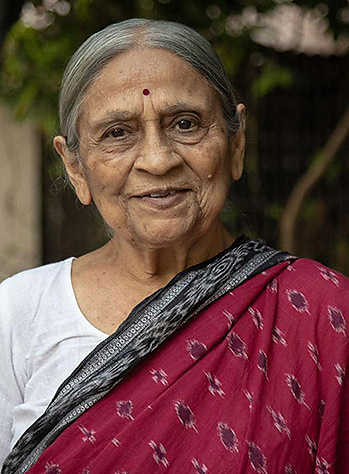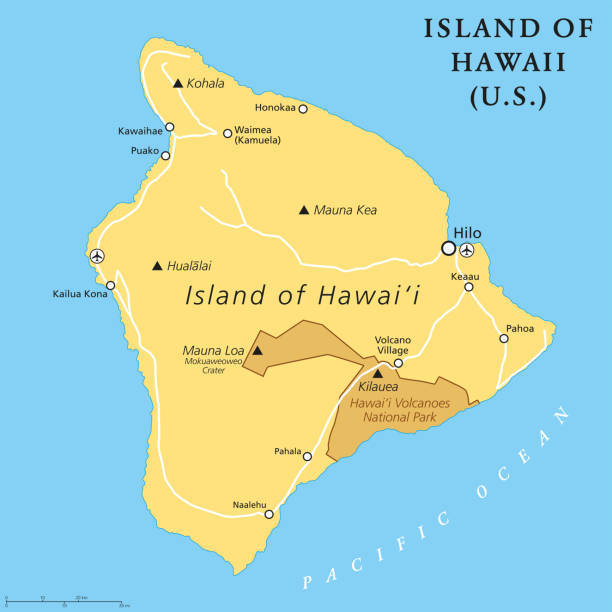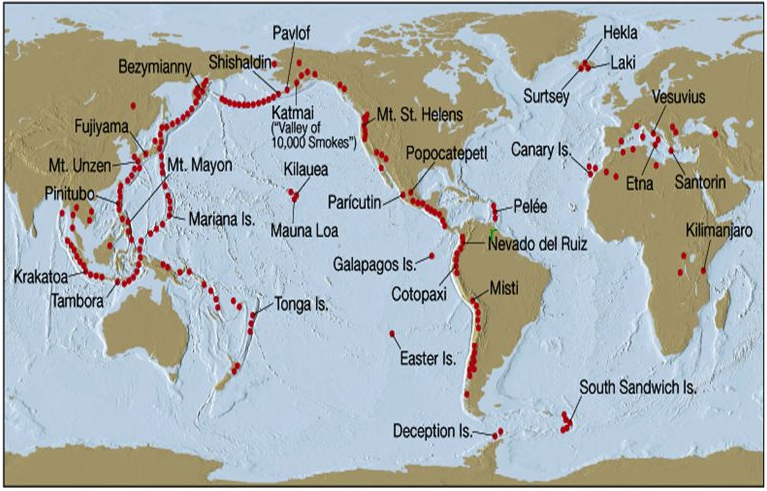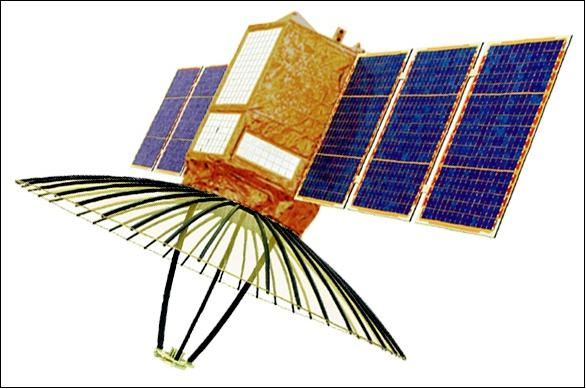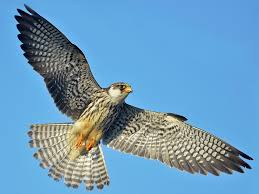Biodiversity & Environment
Adaptation Gap Report 2022
For Prelims: United Nations Environment Programme’s (UNEP), United Nations Framework Convention on Climate Change (UNFCCC), COP 26, COP 27
For Mains: Findings of Adaptation Gap Report 2022, Steps Suggested by the Report, India’s Initiatives regarding Climate Finance.
Why in News?
According to the United Nations Environment Programme’s (UNEP) Adaptation Gap Report, 2022, global efforts in adaptation planning, financing and implementation are not enough to prepare vulnerable communities around the world to adapt to the rising risks from the impacts of climate change.
- The report found some progress on adaptation plans from national governments, but they are not backed by finance.
What are the Findings of the Report?
- A third of the 197 parties to the United Nations Framework Convention on Climate Change (UNFCCC) have incorporated quantified and time-bound targets on adaptation. And 90% of them have considered gender and disadvantaged groups.
- International adaptation finance flows are 5-10 times lower than required and this gap continues to grow. Finance for adaptation increased to USD 29 billion in 2020, a 4% increase over 2019.
- This is when developing countries' estimated annual adaptation needs are USD 160-USD 340 billion by 2030 and USD 315-USD 565 billion by 2050.
What are the Steps Suggested by the Report?
- A Nature-based Approach: The report highlighted that the best way was to link actions on mitigation and adaptation in terms of planning, financing and implementation, which would provide co-benefits.
- One example of this could be nature-based solutions.
- Climate Adaptation: Countries need to back the strong words in the Glasgow Climate Pact with strong action to increase adaptation investments and outcomes, starting at COP27.
- Other Strategies: The adaptation gap must be addressed in four critical ways:
- Increase Financing for Adaptation: There is a need for developed countries to provide a clear roadmap for their promise of doubling finance for adaptation to USD 40 billion, which was decided at COP 26 in Glasgow.
- A New Business Model: The world urgently needs a new business model for turning adaptation priorities into investable projects as there is a mismatch between what governments propose and what financiers consider investable.
- Need for Data Implementation: The availability of climate risk data and information, an issue for adaptation planning in many developing countries.
- Modified Warning Systems: The implementation and operationalisation of early warning systems against extreme weather events and slow onset changes such as sea level rise.
What are India’s Initiatives regarding Climate Finance?
- National Adaptation Fund for Climate Change (NAFCC):
- It was established in 2015 to meet the cost of adaptation to climate change for the State and Union Territories of India that are particularly vulnerable to the adverse effects of climate change.
- National Clean Energy Fund:
- The Fund was created to promote clean energy, and funded through an initial carbon tax on the use of coal by industries.
- It is governed by an Inter-Ministerial Group with the Finance Secretary as the Chairman.
- Its mandate is to fund research and development of innovative clean energy technology in the fossil and non-fossil fuel-based sectors.
- National Adaptation Fund:
- The fund was established in 2014 with a corpus of Rs. 100 crores with the aim of bridging the gap between the need and the available funds.
- The fund is operated under the Ministry of Environment, Forests, and Climate Change (MoEF&CC).
What is United Nations Environment Programme?
- The UNEP is a leading global environmental authority established on 5th June 1972.
- Functions: It sets the global environmental agenda, promotes the sustainable development within the United Nations system, and serves as an authoritative advocate for global environment protection.
- Major Reports: Emission Gap Report, Global Environment Outlook, Frontiers, Invest into Healthy Planet.
- Major Campaigns: Beat Pollution, UN75, World Environment Day, Wild for Life.
- Headquarters: Nairobi, Kenya.
What is United Nations Framework Convention on Climate Change (UNFCCC)?
- UNFCCC was signed in 1992 at the United Nations Conference on Environment and Development also known as the Earth Summit, the Rio Summit or the Rio Conference.
- India is among the select few countries to have hosted the COP of all three Rio conventions on climate change (UNFCCC), biodiversity (CBD) and land (United Nations Convention to Combat Desertification).
- The UNFCCC entered into force in 1994 and has been ratified by 197 countries.
- It is the parent treaty of the 2015 Paris Agreement. It is also the parent treaty of the 1997 Kyoto Protocol.
- The UNFCCC secretariat (UN Climate Change) is the United Nations entity tasked with supporting the global response to the threat of climate change. It is located in Bonn, Germany.
- Its objective is to achieve stabilisation of greenhouse gas concentrations in the atmosphere at a level that would prevent dangerous repercussions within a time frame so as to allow ecosystems to adapt naturally and enable sustainable development.
UPSC Civil Services Examination Previous Year Question (PYQ)
Prelims
Q. “Momentum for Change: Climate Neutral Now” is an initiative launched by (2018)
(a) The Intergovernmental Panel on Climate Change
(b) The UNEP Secretariat
(c) The UNFCCC Secretariat
(d) The World Meteorological Organisation
Ans: (c)
- “Momentum for Change: Climate Neutral Now”, is an initiative launched by the UNFCCC secretariat in 2015.
- The initiative is a pillar under Momentum for Change which seeks to achieve climate neutrality.
- Climate neutrality is a three-step process, which requires individuals, companies and governments to measure their climate footprint; reduce their emissions as much as possible and offset what they cannot reduce with UN certified emission reductions.
- Therefore, option (c) is the correct answer.
Q. The United Nations Framework Convention on Climate Change (UNFCCC) is an international treaty drawn at (2010)
(a) United Nations Conference on the Human Environment, Stockholm, 1972
(b) UN Conference on Environment and Development, Rio de Janeiro, 1992
(c) World Summit on Sustainable Development, Johannesburg, 2002
(d) UN Climate Change Conference, Copenhagen, 2009
Ans: (b)
Mains
Q. Describe the major outcomes of the 26th session of the Conference of the Parties (COP) to the United Nations Framework Convention on Climate Change (UNFCCC). What are the commitments made by India in this conference? (2021)
Q. Discuss global warming and mention its effects on the global climate. Explain the control measures to bring down the level of greenhouse gases which cause global warming, in the light of the Kyoto Protocol, 1997. (2022)
Source: DTE

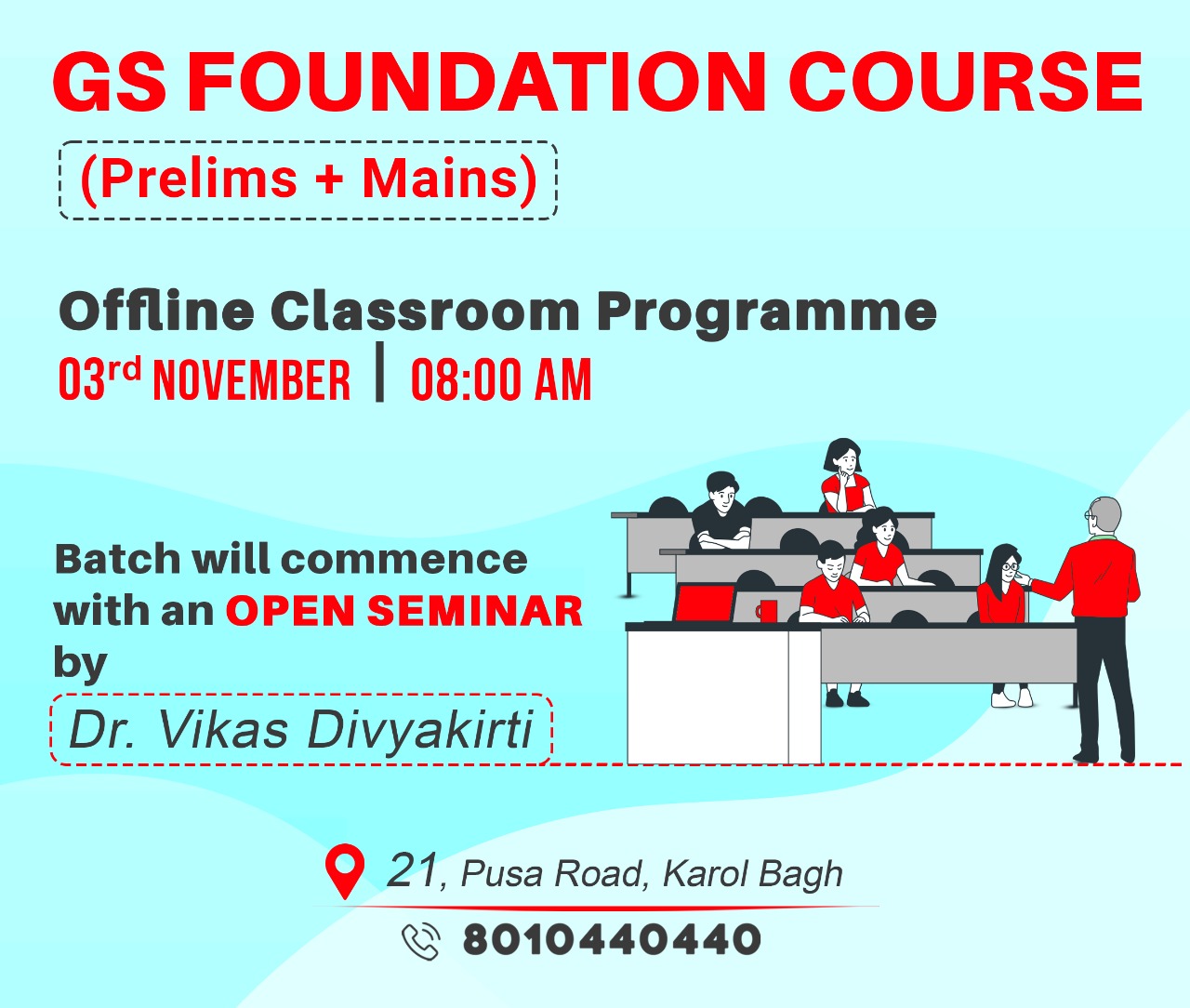
Social Justice
Self-Employed Women’s Association (SEWA)
For Prelims: SEWA, Padma Bhushan, Magsaysay Award, Mahatma Gandhi, ILO, PM-SVANidhi scheme
For Mains: Issue related to Women Empowerment
Why in News?
Recently, Elaben Bhatt, renowned founder of the Self-Employed Women’s Association (SEWA), passed away.
Who was Elaben Bhatt?
- She was a noted Gandhian, leading women’s empowerment activist.
- For her work, Elaben received numerous accolades and was conferred several national and international awards including Padma Bhushan, Magsaysay Award and the Indira Gandhi Sadbhavna Award.
- She was a Member of Parliament and of the Planning Commission of the Government of India.
- She used all these opportunities to bring about a structural improvement in the condition of Indian women.
- She joined the Textile Labour Association in 1955, a union that emerged after a textile strike led by Mahatma Gandhi in 1918.
- Ela Bhatt’s work at the women’s wing of the union and continuous interaction with women migrants in the textile sector led her to conceptualize the self-help group.
What is the Self-Employed Women’s Association (SEWA)?
- SEWA was born out of the Textile Labour Association (TLA) founded by Anasuya Sarabhai and Mahatma Gandhi in 1920 but it could not register as a trade union until 1972 because its members did not have an “employer” and were thus not seen as workers.
- In 1981, after the anti-reservation riots in which the Bhatts were targeted for supporting quotas for Dalits in medical education, the TLA broke up with SEWA.
- As early as in 1974, SEWA Bank was established to provide small loans to poor women.
- It is an initiative that was recognised by the International Labour Organisation as a microfinance movement.
- With an annual membership fee of just Rs 10, SEWA allows anyone who is self-employed to become a member.
- Its network is spread across 18 Indian states, in other countries of South Asia, in South Africa, and Latin America.
- It has helped rehabilitate women in personal, and even political or social crises, by empowering them through skilling and training.
- It simultaneously provided employment to women and promoted cooperative production, consumption and marketing of textiles which constituted the core of India’s industrialisation.
- It also decisively influenced the course of trade unionism and labor movement in India.
What are the Achievements of SEWA?
- The Unorganised Workers Social Security Act (2008), the National Rural Livelihoods Mission (2011), and the Street Vendors Act (2014), are seen as successes of SEWA’s struggle.
- The PM Street Vendors Atmanirbhar Nidhi (PM-SVANidhi) scheme is seen as being inspired by SEWA’s microfinance model.
- During the pandemic, SEWA launched Anubandh, an e-commerce platform to connect sellers with buyers, to keep kitchen fires burning through the lockdowns.
- The efforts of SEWA to change the lives of over 2.1 million members and many more around the world have long been recognised as a model for the world.
UPSC Civil Services Examination Previous Year Question (PYQ)
Q. “Micro-Finance as an anti-poverty vaccine, is aimed at asset creation and income security of the rural poor in India”. Evaluate the role of the Self Help Groups in achieving the twin objectives along with empowering women in rural
India. (2020)
Source: IE

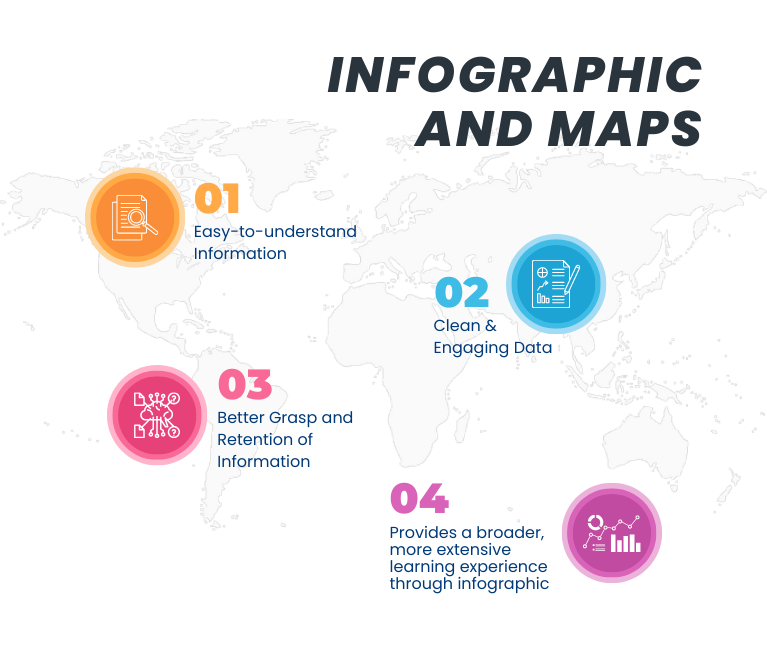
Geography
Mauna Loa Volcano
For Prelims: Volcano, Ring of Fire
For Mains: volcano and its distribution
Why in News?
Mauna Loa, the largest active volcano in the world, may erupt in the near future.
Where is Mauna Loa?
- Mauna Loa is one of five volcanoes that together make up the Big Island of Hawaii.
- It is the southernmost island in the Hawaiian archipelago.
- It’s not the tallest (that title goes to Mauna Kea) but it’s the largest and makes up about half of the island’s land mass.
- It sits immediately north of Kilauea volcano, which is currently erupting from its summit crater.
- Kilauea is well-known for a 2018 eruption that destroyed 700 homes and sent rivers of lava spreading across farms and into the ocean.
- Mauna Loa last erupted 38 years ago.
What about the Other Volcanoes?
- Recently Erupted:
- Volcanoes in India:
- Barren Island, Andaman Islands (India's only active volcano)
- Narcondam, Andaman Islands
- Baratang, Andaman Islands
- Deccan Traps, Maharashtra
- Dhinodhar Hills, Gujarat
- Dhosi Hill, Haryana
How are Volcanoes Distributed around the World?
- Volcanoes are distributed all around the world, mostly along the edges of Tectonic Plates, although there are intra-plate volcanoes that form from mantle Hotspots (e.g., Hawaii).
- Some volcanic regions, such as Iceland, happen to occur where there is both a hotspot and a plate boundary.
- World Distribution of Volcano:
- Circum-Pacific Belt:
- The Pacific "Ring of Fire" is a string of volcanoes and sites located on most of the Earth's subduction zones having high seismic activity, around the edges of the Pacific Ocean.
- The Pacific Ring of Fire has a total of 452 volcanoes.
- Most of the active volcanoes are found on its western edge, from the Kamchatka Peninsula in Russia, through the islands of Japan and Southeast Asia, to New Zealand.
- Mid-Continental Belt:
- This volcanic belt extends along the Alpine Mountain system of Europe, north America, through Asia Minor, Caucasia, Iran, Afghanistan and Pakistan to the Himalayan Mountain system, including Tibet, the pamir, Tien-Shan, altai, and the mountains of China, Myammar and eastern Siberia.
- This belt includes the volcanoes of Alps mountains, Mediterranean Sea (Stromboli, Vesuvius, Etna, etc.), volcanoes of Aegean Sea, Mt. Ararat (Turkey), Elburz, Hindukush and Himalayas.
- Mid Atlantic Ridge:
- The Mid-Atlantic Ridge separates the North and South American Plate from the Eurasian and African Plate.
- Magma rises through the cracks and leaks out onto the ocean floor like a long, thin, undersea volcano. As magma meets the water, it cools and solidifies, adding to the edges of the sideways-moving plates.
- This process along the divergent boundary has created the longest topographic feature in the form of Mid oceanic ridges under the Oceans of the world.
- Intra-Plate Volcanoes:
- The 5% of known volcanoes in the world that are not closely related to plate margins are generally regarded as intraplate, or “hot-spot,” volcanoes.
- A hot spot is believed to be related to the rising of a deep-mantle plume, which is caused by very slow convection of highly viscous material in Earth’s mantle.
- It can be represented by a single oceanic volcano or lines of volcanoes such as the Hawaiian-Emperor seamount chains.
- The 5% of known volcanoes in the world that are not closely related to plate margins are generally regarded as intraplate, or “hot-spot,” volcanoes.
- Circum-Pacific Belt:
UPSC Civil Services Examination, Previous Year Question
Prelims
Q. Consider the following statements: (2018)
- The Barren Island volcano is an active volcano located in the Indian territory.
- Barren Island lies about 140 km east of Great Nicobar.
- The last time the Barren Island volcano erupted was in 1991 and it has remained inactive since then.
Which of the statements given above is/are correct?
(a) 1 only
(b) 2 and 3
(c) 3 only
(d) 1 and 3
Ans: (a)
- Barren Island is India’s only active volcano which is located in the Andaman and Nicobar Islands. Hence, statement 1 is correct.
- It is located at about 140 km from Port Blair, southern part of Andaman Island in Andaman Sea. The distance between Barren Island to Great Nicobar is more than the given distance. Hence, statement 2 is not correct.
- First recorded eruption of the volcano dates back to 1787. In the past 100 years, it has erupted at least five times. Then for the next 100 years, it remained silent. It re-erupted massively in 1991.
- Since then, the eruption has been recorded every two-three years; the latest in the series was February 2016. Hence, statement 3 is not correct. Therefore, option (a) is the correct answer.
Mains
Q. Discuss the geophysical characteristics of Circum-Pacific Zone. (2020)
Q. Mention the global occurrence of volcanic eruptions in 2021 and their impact on regional environment. (2021)
Source: IE

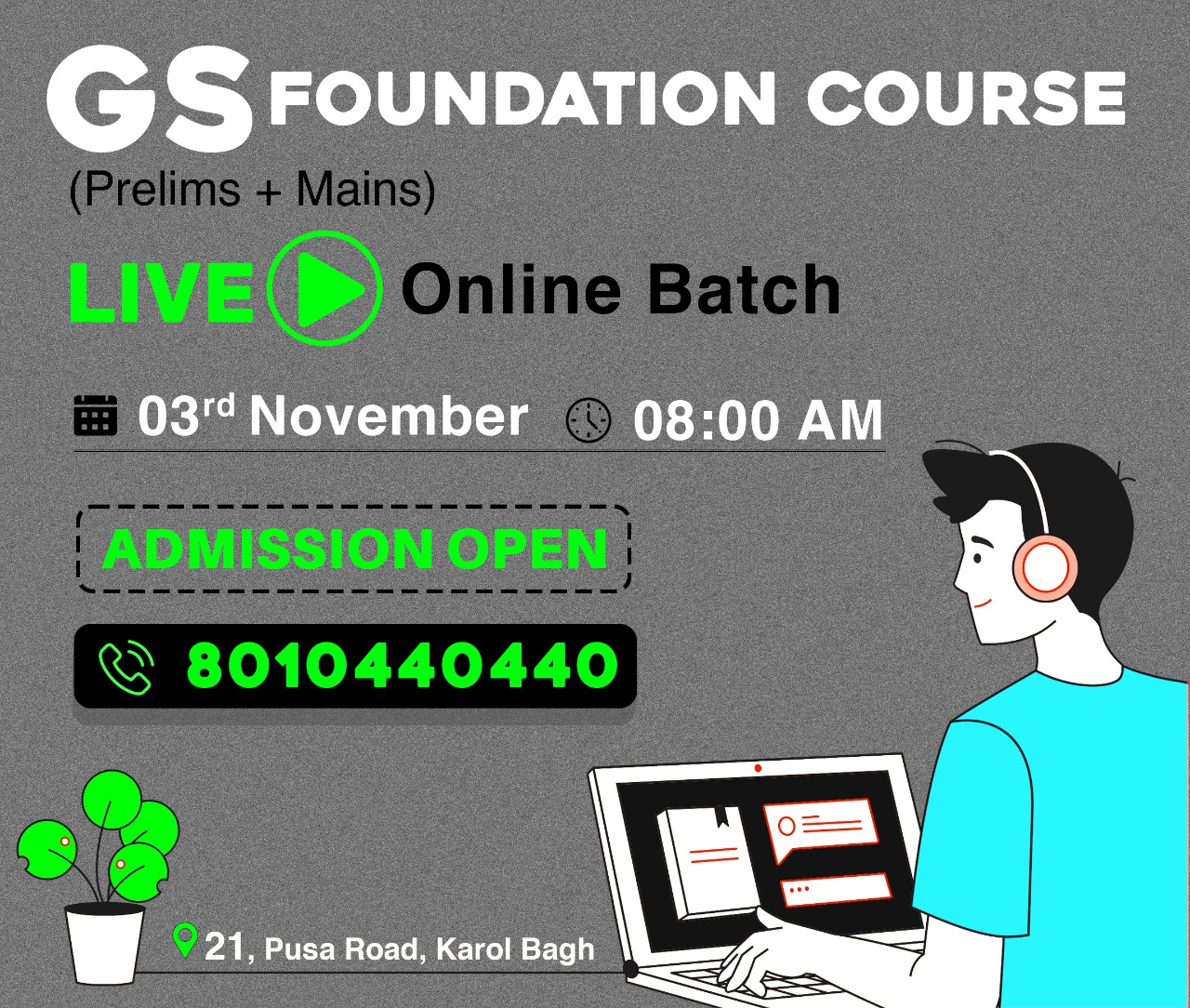
Governance
UDISE Plus Report
For Prelims: (UDISE) Plus 2021-22 report, New National Education Policy (NEP), 2020, Sarva Shiksha Abhiyan, Mid-Day Meal Scheme
For Mains: Education System in India and related issues, Government Policies & Interventions
Why in News?
Recently, the Union Education Minister released the Unified District Information System for Education (UDISE) Plus 2021-22 report on school education.
- The Ministry of Education also released the Performance Grading Index (PGI) for 2020-21.
What is the UDISE Plus Report?
- It is a comprehensive study that provides information on enrollment and dropout rates of school students, number of teachers in schools, and information on other infrastructural facilities like toilets, buildings and electricity.
- It was launched in 2018-2019 to speed up data entry, reduce errors, improve data quality and ease its verification.
- It is an application to collect the school details about factors related to a school and its resources.
- It is an updated and improved version of UDISE, which was initiated in 2012-13 by the Ministry of Education.
What are the Findings of the UDISE Plus 2021-22 Report?
- Decline in Enrolments:
- Pre-Primary Level:
- A total of 94.95 lakh students entered pre-primary classes in 2021-2022, registering a drop of 10% as compared to the previous year when 1.06 crore children enrolled in these classes.
- However, in 2020-2021, there was already a decline of 21% enrolment in pre-primary classes as compared to 1.35 crore the year before as the pandemic and lockdown measures resulted in school closures and classrooms moving online
- Primary and Higher Secondary Level:
- Enrolment in primary classes (classes 1 to 5) also saw a drop for the first time—falling from 12.20 lakh in 2020-2021 to 12.18 lakh in 2021-2022.
- However, the total number of students from primary to higher secondary increased by 19 lakhs to 25.57 crores.
- Pre-Primary Level:
- Decline in Number of Schools:
- Total number of schools in 2021-22 stood at 14.89 lakhs compared to 15.09 lakhs in 2020-21.
- The decline was mainly due to closure of private and other management schools and grouping/clustering of schools by various states.
- There were also 1.89 lakh fewer teachers as their number reduced from 96.96 lakh in 2020-2021 to 95.07 lakh in 2021-2022.
- Total number of schools in 2021-22 stood at 14.89 lakhs compared to 15.09 lakhs in 2020-21.
- Computer Facilities and Internet Access:
- Computer facilities were available in 44.75% of schools, while Internet access was available only in 33.9% of schools.
- However, their availability has improved as compared to pre-covid when only 38.5% of schools had computers and 22.3% had Internet facilities.
- Gross Enrolment Ratio (GER):
- It compares the enrolment in a specific level of education to the population of the corresponding age group.
- Overall Improvement:
- The GER for the primary section has improved from 101.3% in 2018-2019 to 104.8% in 2021-2022.
- For secondary classes, it has risen to 79.6% in 2021-22, from 76.9% in 2018-19 and for higher secondary level, it has increased from 50.14% to 57.6%.
- Category-wise Improvement:
- Total number of Scheduled Caste enrolment increased to 4.82 Crore in 2021-22 as compared to 4.78 Crore in 2020-21.
- Total Scheduled Tribe enrolment increased to 2.51 crore in 2021-22 from 2.49 crore in 2020-21.
- Total other backward students also increased to 11.48 crore in 2021-22 from 11.35 crore in 2020-21.
- Total enrollment of Children with Special Needs (CWSN) in 2021-22 stands at 22.67 lakh as compared to 21.91 lakh in 2020-21.
- Overall Improvement:
- It compares the enrolment in a specific level of education to the population of the corresponding age group.
- Gender Parity Index (GPI):
- In 2021-22 over 12.29 crore girls are enrolled in primary to higher secondary showing an increase of 8.19 lakh compared to the enrolment of girls in 2020-21.
- The Gender Parity Index (GPI) of GER indicates the representation of girls in school with respect to their population in the corresponding age group.
- In 2021-22 over 12.29 crore girls are enrolled in primary to higher secondary showing an increase of 8.19 lakh compared to the enrolment of girls in 2020-21.
What is the Performance Grading Index?
- About:
- It is an evidence-based comprehensive analysis of the school education system across states and Union Territories.
- The Index classifies States and Union Territories into 10 grades based on their score out of a total 1,000 points.
- The highest achievable Grade is Level 1, which is for State/UT scoring more than 950 points out of a total of 1000 points.
- The lowest grade is Level 10 which is for scores below 551.
- Their performance is assessed on a total of 70 indicators in five domains.
- The five domains are learning outcome, access, infrastructure and facilities, equity and governance process.
- The Index is based on data drawn from several data sources, including the Unified District Information System for Education Plus (UDISE +) 2020-21, National Achievement Survey NAS 2017, and Mid Day Meal Portal.
- Objective:
- The prime objective of PGI is to promote evidence-based policymaking and highlight course correction to ensure quality education for all.
- The PGI is expected to help States and UTs to pinpoint the gaps and accordingly prioritize areas for intervention to ensure that the school education system is robust at every level.
What are the Findings of the PGI?
- States attained Level 2:
- A total of 7 States and UTs, Viz., Kerala, Punjab, Chandigarh, Maharashtra, Gujarat, Rajasthan, and Andhra Pradesh have attained Level II (score 901-950) in 2020-21 as compared to none in 2017-18 and 4 in 2019-20.
- Gujarat, Rajasthan and Andhra Pradesh are the new entrants to the highest achieved level of any state so far.
- A total of 7 States and UTs, Viz., Kerala, Punjab, Chandigarh, Maharashtra, Gujarat, Rajasthan, and Andhra Pradesh have attained Level II (score 901-950) in 2020-21 as compared to none in 2017-18 and 4 in 2019-20.
- States attained Level 3:
- A total of 12 States and UTs, including Delhi, Tamil Nadu, Karnataka and Odisha, attained Level 3 with a score between 851-900.
- Biggest Improvement:
- Ladakh has seen the biggest improvement by climbing up from Level 10 in 2019-2020 to Level 4 in 2020-2021.
What is the State of Education System in India?
- About:
- According to PGI, the Indian Education System is one of the largest in the world with about 14.9 lakh schools, 95 lakh teachers, and nearly 26.5 crore students.
- The current state of Education faces major challenges like lack of adequate infrastructure, low government expenditure on education (less than 3.5% of the GDP).
- Related Initiatives:
UPSC Civil Services Examination, Previous Year Question
Q. The quality of higher education in India requires major improvements to make it internationally competitive. Do you think that the entry of foreign educational institutions would help improve the quality of technical and higher education in the country? Discuss. (2015)
Q. The Right of Children to Free and Compulsory Education Act, 2009 remains inadequate in promoting incentive-based systems for children's education without generating awareness about the importance of schooling. Analyse. (2022)
Source: TH


Governance
Child Welfare Police Officers to be Appointed
For Prelims: Child Welfare Police Officer (CWPO), National Commission for Protection of Child Rights (NCPCR), POCSO Act, 2012, Juvenile Justice (Care and Protection of Children) Act, 2015, Child Sexual Abuse.
For Mains: Issues related to Children and steps need to be taken,
Why in News?
The Ministry of Home Affairs has asked the States/Union Territories to appoint a Child Welfare Police Officer (CWPO) in every police station to exclusively deal with children, either as victims or perpetrators as per the advisory issued by National Commission for Protection of Child Rights (NCPCR).
- The advisory comes in the backdrop of increasing number of crimes against children, including murders and offences under the Protection of Children from Sexual Offences (POCSO) Act, 2012.
What is the Advisory Issued by NCPCR?
- At least one officer, not below the rank of an Assistant Sub-Inspector, must be designated as CWPO in every police station as per the provisions under the Juvenile Justice (Care and Protection of Children) Act, 2015.
- A Special Juvenile Police Unit in each district and city headed by an officer not below the rank of a Deputy Superintendent of Police should be established.
- The unit would comprise CWPOs and two social workers having experience of working in the field of child welfare, of whom one shall be a woman, to co-ordinate all functions of police in relation to children.
- The contact particulars of the CWPOs should be displayed in all police stations for the public to contact.
What is the Status of Crimes Against Children in India?
- According to the data published by the National Crime Records Bureau (NCRB):
- The total number of crimes against children increased from 1,28,531 in 2020 to 1,49,404 in 2021.
- While Madhya Pradesh topped the country with 19,173 cases, Uttar Pradesh stood second with 16,838 cases.
- A total of 1,402 children were murdered across the country.
- As many as 1,15,414 cases of kidnapping and abduction involving 1,18,549 children were reported in 2021.
- Uttar Pradesh, Maharashtra and Madhya Pradesh topped the list in these cases.
- The total number of crimes against children increased from 1,28,531 in 2020 to 1,49,404 in 2021.
What is NCPCR?
- NCPCR is a statutory body set up in March 2007 under the Commissions for Protection of Child Rights (CPCR) Act, 2005.
- It is under the administrative control of the Ministry of Women & Child Development.
- The Commission's mandate is to ensure that all laws, policies, programmes, and administrative mechanisms are in consonance with the child rights perspective as enshrined in the Constitution of India and also the UN Convention on the Rights of the Child.
- It inquires into complaints relating to a child's right to free and compulsory education under the Right to Education Act, 2009.
- It monitors the implementation of POCSO Act, 2012.
What is Juvenile Justice (Care and Protection of Children) Act, 2015?
- It replaced the Juvenile Delinquency Law and the Juvenile Justice (Care and Protection of Children Act) 2000.
- The Act offered provisions to allow trials of juveniles in the age group of 16-18 years as an adult who were found to be in conflict with the law, especially heinous crimes.
- The Act also offered provisions regarding adoption. The Act replaced the Hindu Adoptions and Maintenance Act (1956) and Guardians of the ward Act (1890) with more universally accessible adoption law.
- The Act enabled smooth functioning of adoption procedures for orphans, surrendered, and abandoned children while making the Central Adoption Resource Authority (CARA) the statutory body for adoption-related matters.
What is Protection of Children from Sexual Offences Act, 2012?
- It was enacted to protect the children from offences of sexual assault, sexual harassment and pornography with due regard for safeguarding the interest and well-being of children.
- It defines a child as any person below eighteen years of age and regards the best interests and welfare of the child as a matter of paramount importance at every stage, to ensure the healthy physical, emotional, intellectual and social development of the child.
- It defines different forms of sexual abuse, including penetrative and non-penetrative assault, as well as sexual harassment and pornography.
- It deems a sexual assault to be “aggravated” under certain circumstances, such as when the abused child is mentally ill or when the abuse is committed by a person in a position of trust or authority like a family member, police officer, teacher, or doctor.
- It also casts the police in the role of child protectors during the investigative process.
- The Act stipulates that a case of child sexual abuse must be disposed of within one year from the date the offence is reported.
- It was amended in August 2019 to provide more stringent punishment, including the death penalty, for sexual crimes against children.
Way Forward
- Comprehensive Framework: The report calls for prioritising prevention activities against abuse, creating safe online environments for children, besides calling on all with a role to protect children to work together to dramatically improve the response.
- Multi Stakeholder Approach: Developing a comprehensive outreach system to engage parents, schools, communities, NGO partners and local governments as well as police and lawyers to ensure better implementation of the legal framework, policies, national strategies and standards.
UPSC Civil Services Examination, Previous Year Question
Q. With reference to the United Nations Convention on the Rights of the Child, consider the following: (2010)
- The Right to Development
- The Right to Expression
- The Right to Recreation
Which of the above is/are the Rights of the child?
(a) 1 only
(b) 1 and 3 only
(c) 2 and 3 only
(d) 1, 2 and 3
Ans: D
Exp:
- The United Nations (UN) took its first step towards declaring the importance of child rights by establishing the United Nations International Children’s Emergency Fund (UNICEF) in 1946. In 1948, the UN General Assembly adopted the Universal Declaration of Human Rights, making it the first UN document to recognise children’s need for protection.
- The first UN document specially focused on child rights was the Declaration on the Rights of the Child, but instead of being a legally binding document it was more like a moral guide of conduct for governments. It was not until 1989 that the global community adopted the United Nations Convention on the Rights of the Child, making it the first international legally binding document concerning child rights.
- The convention, which came into force on the 2nd September 1990, consists of 54 articles covering various categories of child rights including right to life, right to development, right to engage in play and recreational activities, right to protection, right to participation, expression, etc. Hence, 1, 2 and 3 are correct.
- Therefore, option D is the correct answer.
Source: TH

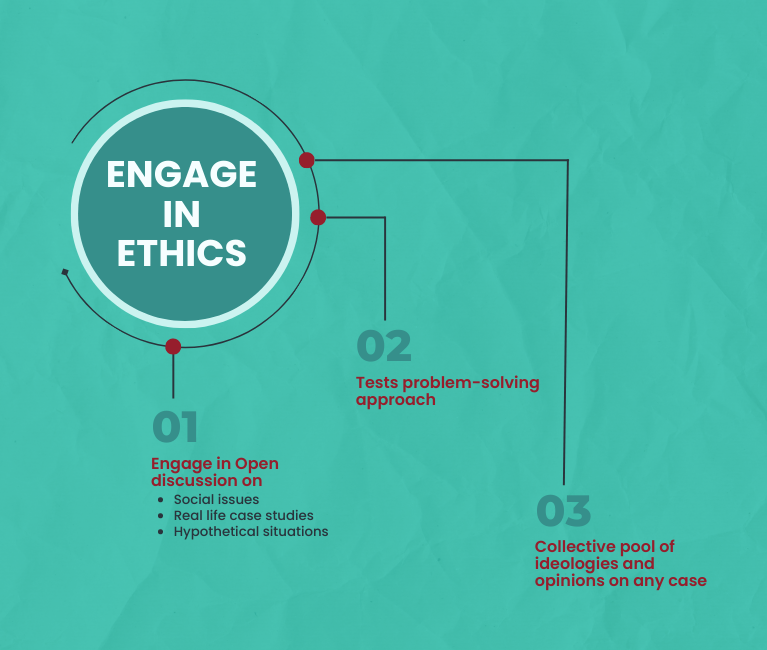
Important Facts For Prelims
RISAT-2
Why in News?
Recently, the Indian Space Research Organisation’s (ISRO) RISAT (Radar Imaging Satellite)-2 satellite has made an uncontrolled re-entry into the Earth’s atmosphere at the predicted impact point in the Indian Ocean near Jakarta.
- RISAT-2 is India’s first "eye in the sky" which keep surveillance on the country’s borders as part of anti-infiltration and anti-terrorist operations.
What is RISAT-2?
- About:
- The principal sensor of Risat-2, considered a ‘spy’ satellite, was an X-band synthetic-aperture radar from Israel Aerospace Industries.
- Risat-2 was built more quickly following the 2008 Mumbai terror attacks due to delay with the indigenously developed C-band for Risat-1 satellite. The satellite, which was India's first dedicated reconnaissance satellite, possessed day-night as well as all-weather monitoring capability.
- It was also used to track hostile ships at sea that were deemed a military threat.
- Launch:
- Risat-2, weighing about 300 kg was launched on April 20, 2009, by the PSLV-C12 launch vehicle.
- Significance:
- Risat-2 provided beneficial payload data for over 13 years.
- Since its injection, Risat-2’s radar payload services were provided for various space applications.
- Risat-2 is a clear example of ISRO’s capability to carry out spacecraft orbital operations in an efficient and optimal way.
- As Risat-2 re-entered within 13.5 years, it complied with all necessary international mitigation guidelines for space debris, showing the space agency’s commitment towards the long-term sustainability of outer space.
- Risat-2 provided beneficial payload data for over 13 years.
What are the Upcoming Projects of ISRO?
- Gaganyaan: Indian Human Spaceflight Programme.
- Aditya-L1: To Study the Sun’s atmosphere.
- NASA-ISRO Synthetic Aperture Radar Mission: To study hazards and global environmental change.
- Shukrayaan-1: Orbiter to Venus.
UPSC Civil Services Examination, Previous Year Question (PYQ)
Q. With reference to India’s satellite launch vehicles, consider the following statements: (2018)
- PSLVs launch the satellites useful for Earth resources monitoring whereas GSLVs are designed mainly to launch communication satellites.
- Satellites launched by PSLV appear to remain permanently fixed in the same position in the sky, as viewed from a particular location on Earth.
- GSLV Mk III is a four-staged launch vehicle with the first and third stages using solid rocket motors, and the second and fourth stages using liquid rocket engines.
Which of the statements given above is/are correct?
(a) 1 only
(b) 2 and 3
(c) 1 and 2
(d) 3 only
Ans: (a)
Source: TH
Important Facts For Prelims
Wangala Dance
Why in News?
The opening ceremony of the Rising Sun Water Fest-2022 was conducted amidst the pristine surroundings of Umiam Lake (man-made reservoir) at Meghalaya.
- Members of the Garo tribal community perform Wangala dance on the occasion of ‘The Rising Sun Water Fest-2022’.
What is Wangala Dance?
- The Wangala is also known as the Festival of Hundred Drums and is celebrated with different forms of dances on the tunes of folk songs played on drums and primitive flute made of buffalo horns.
- The festival is celebrated in honour of the Sun God and marks the end of the long harvest season.
- The celebration also signifies the end of a long toil period in the field for the Garo tribe before the start of the winters.
- For the Garo Tribe in Meghalaya, the festival is a way to preserve and promote their cultural identity and they exhibit their tradition in their celebrations.
Who are the Garo Community?
- The Garos, who call themselves A'chiks, are the second largest tribe in Meghalaya.
- The other two major tribes of Meghalaya are the Khasi People and the Jaintia tribe.
- The Garos have a strong tradition that they have come from Tibet. They have a number of dialects and cultural groups. Each of them originally settled at a particular area of the Garo Hills and outlying plain lands.
- However, the culture of the modern Garo community has been greatly influenced by Christianity. Nokpantes are the glory of the past and all children are given equal care, rights and importance by modern parents.
- The Garo marriage is regulated by two important laws, viz., Exogamy and A'Kim according to the belonging to the same clan. Marriages are not allowed within the same clan.
- According to the law of A·Kim, a man or a woman who has once contracted marriage will never be free to remarry person of another clan, even after the death of his/ her spouse.
- The Garos are one of the few remaining matrilineal societies in the world.
- The individuals take their clan titles from their mothers. Traditionally, the youngest daughter inherits the property from her mother.
- Sons leave the parents' house at puberty, and are trained in the village bachelor dormitory (Nokpante). After getting married, the man lives in his wife's house. Garos are only a matrilineal society, but not matriarchal.
Source: TH

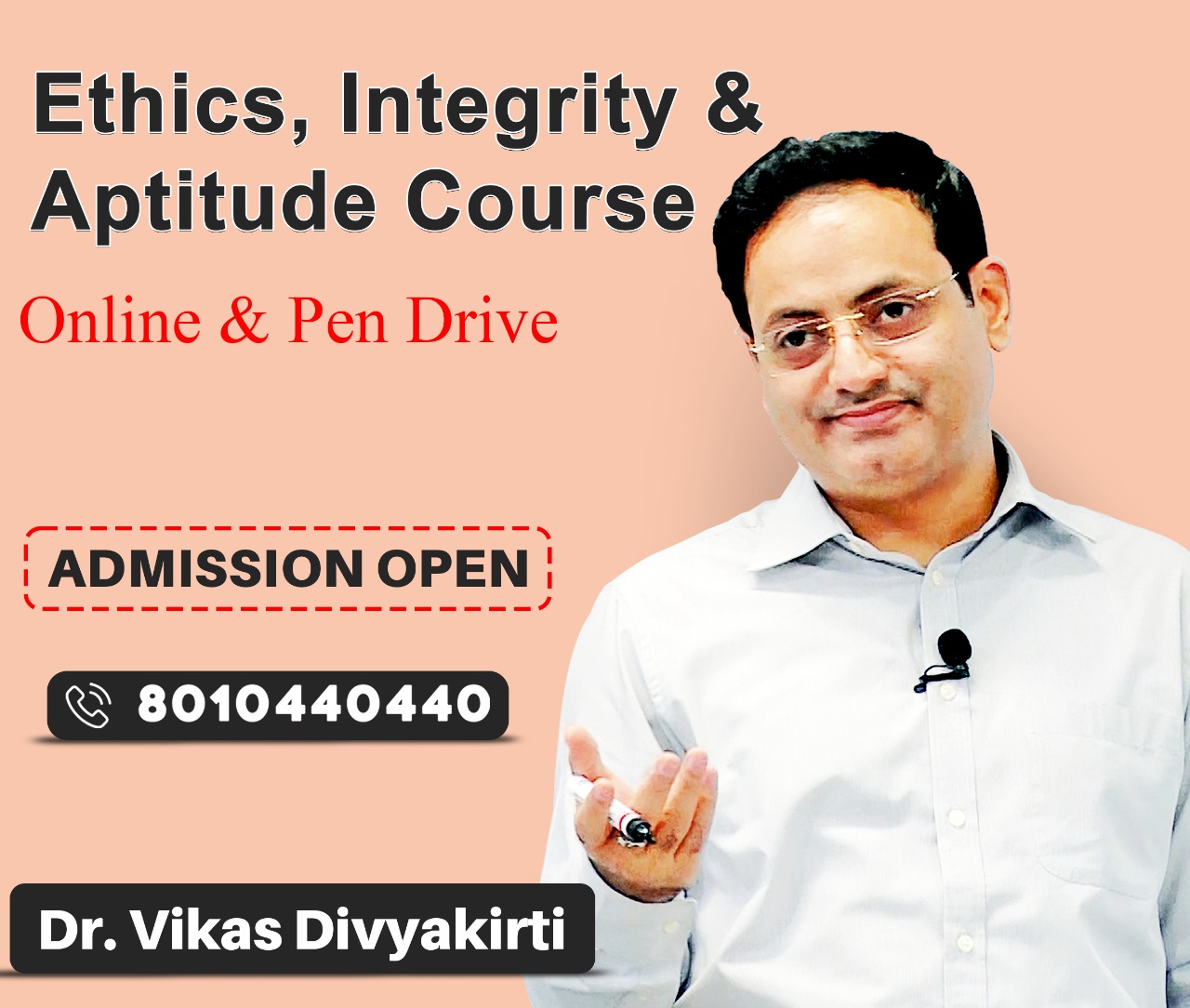
Important Facts For Prelims
Tokhu Emong Festival
Why in News?
Nagaland is undertaking four-day Tokhu Emong Bird Count (TEBC), the first avian documentation exercise to go beyond Amur falcons.
- The exercise has been timed with the post-harvest Tokhu Emong festival of the Lothas, the Naga community that dominates Wokha district of Nagaland.
What is Tokhu Emong Festival?
- A perfect blend of religion, culture and entertainment, ‘Tokhu Emong’ is widely celebrated in Wokha district.
- Celebrated on 7th November every year, this color-filled festival stretches over to 9 days.
- ‘Tokhu’ means moving from house to house, collecting tokens and gifts in form of naturals resources and food. However, the meaning of ‘Emong’ is to put a halt for the appointed time.
- Significant attraction of this festival includes community songs, dances, feast, fun and frolic.
- Through the commencement of this festival, people relive the stories of their ancestors composed decades before.
- During the festival, gracious offerings are made to the ‘Sky God’ and ‘Earth God’ seeking for blessings.
What are Amur Falcons?
- Amur falcons, the world’s longest travelling raptors start travelling with the onset of winters.
- The raptors breed in southeastern Siberia and northern China, and migrate in millions across India and then over the Indian Ocean to southern Africa before returning to Mongolia and Siberia.
- Their 22,000-kilometre migratory route is one of the longest amongst all avian species.
- They get their name from the Amur River that forms the border between Russia and China.
- Doyang Lake in Wokha, Nagaland is better known as a stopover for the Amur falcons during their annual migration from their breeding grounds to warmer South Africa.
- Thus, Nagaland (Pangti Village) is also known as the "Falcon Capital of the World".
- The birds are the least concern under the International Union for Conservation of Nature (IUCN) Red List, but the species is protected under the Indian Wildlife Protection Act, 1972, and the Convention on Migratory Species, to which India is a signatory (which means it is mandatory to protect the birds).
Source: TH


Important Facts For Prelims
National Tribal Dance Festival 2022
Why in News?
Artists from across the world take part in the 3rd Edition of National Tribal Dance Festival in Raipur, Chhattisgarh on the event of state foundation day.
- Nearly 1,500 dancers from across India and countries like Mozambique, Mongolia, Tonga, Russia, Indonesia, Maldives, Serbia, New Zealand and Egypt arrived for the festival.
What is National Tribal Dance Festival?
- National Tribal Dance Festival is one of Chhattisgarh's grand festivals which celebrates diverse tribal communities and their culture not just in India but from across the globe.
- It is organised under the Tourism and Culture Department of Chhattisgarh.
- This festival aims to unite the tribal communities and provides an opportunity to educate about their rich culture for all.
- The first National Tribal Dance Festival was organised in 2019 and second in 2021.
What are the Indian Folk and Tribal Dances of India?
- Indian folk and tribal dances are simple dances, and are performed to express joy and happiness among themselves.
- Folk and tribal dances are performed for every possible occasion, to celebrate the arrival of seasons, birth of a child, a wedding and festivals.
- Men and women perform some dances exclusively, while in some performances men and women dance together.
|
Major Folk and Tribal Dance Forms of India |
|
| State | Folk/Tribal Dance Form |
| Assam | Bagurumba, Bihu, Bhortal, Jhumur |
| Arunachal Pradesh | Bardo Chham |
| Chhattisgarh | Raut Nacha |
| Goa | Fugdi |
| Gujarat | Dandiya Raas, Garba |
| Himachal Pradesh | Nati |
| Haryana | Ras Leela |
| Jammu and Kashmir | Dumhal |
| Kerala | Chakyar Koothu, Duffmuttu, Margamkali, Oppana, Padyani, Theyyam, Thirayattam |
| Karnataka | Hulivesha, Pata Kunitha |
| Madhya Pradesh | Grida, Maanch, Matki, Phulpati |
| Nagaland | Chang Lo |
| Mizoram | Cheraw |
| Maharashtra | Lavani, Parvi Nach |
| Punjab | Bhangra, Giddha, Kikkli |
| Odisha | Chhau, Goti Pua, Baagh Naach, Dalkhai, Dhap, Gumra, Karma Naach, Keisabadi |
| Puducherry | Garadi |
| Rajasthan | Ghoomar, Kalbelia, Kachchhi Ghodi |
| Tamil Nadu | Parai Attam, Kaaragattam, Kolattam, Mayil Attam, Paampu Attam, Oyilattam, Puliyattam, Poikal Kudirai Attam, Theru Koothu |
| Tripura | Hojagiri |
| Uttar Pradesh | Mayur Nritya, Charukala |
| West Bengal | Gambhira, Alkap, Domni |
| Sikkim | Singhi Chaam |
Source: TH



